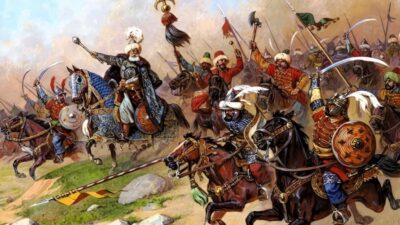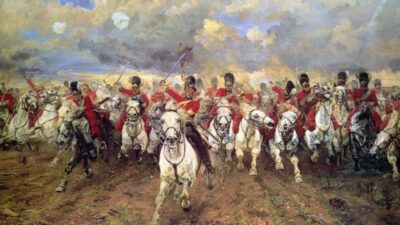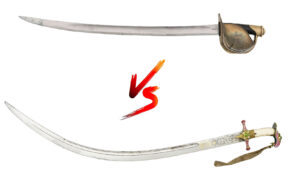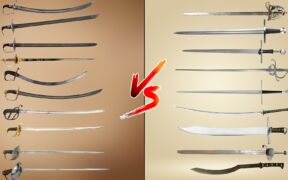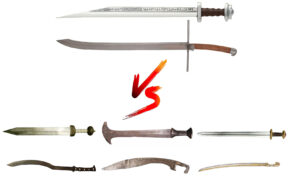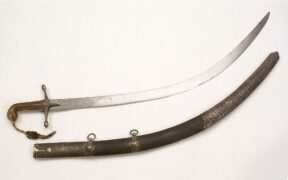Our content features commercial links to our products, committed to transparent, unbiased, and informed editorial recommendations. Learn More
Scimitar vs Sabre Swords: What Are the Main Differences?
NO AI USED This Article has been written and edited by our team with no help of the AI
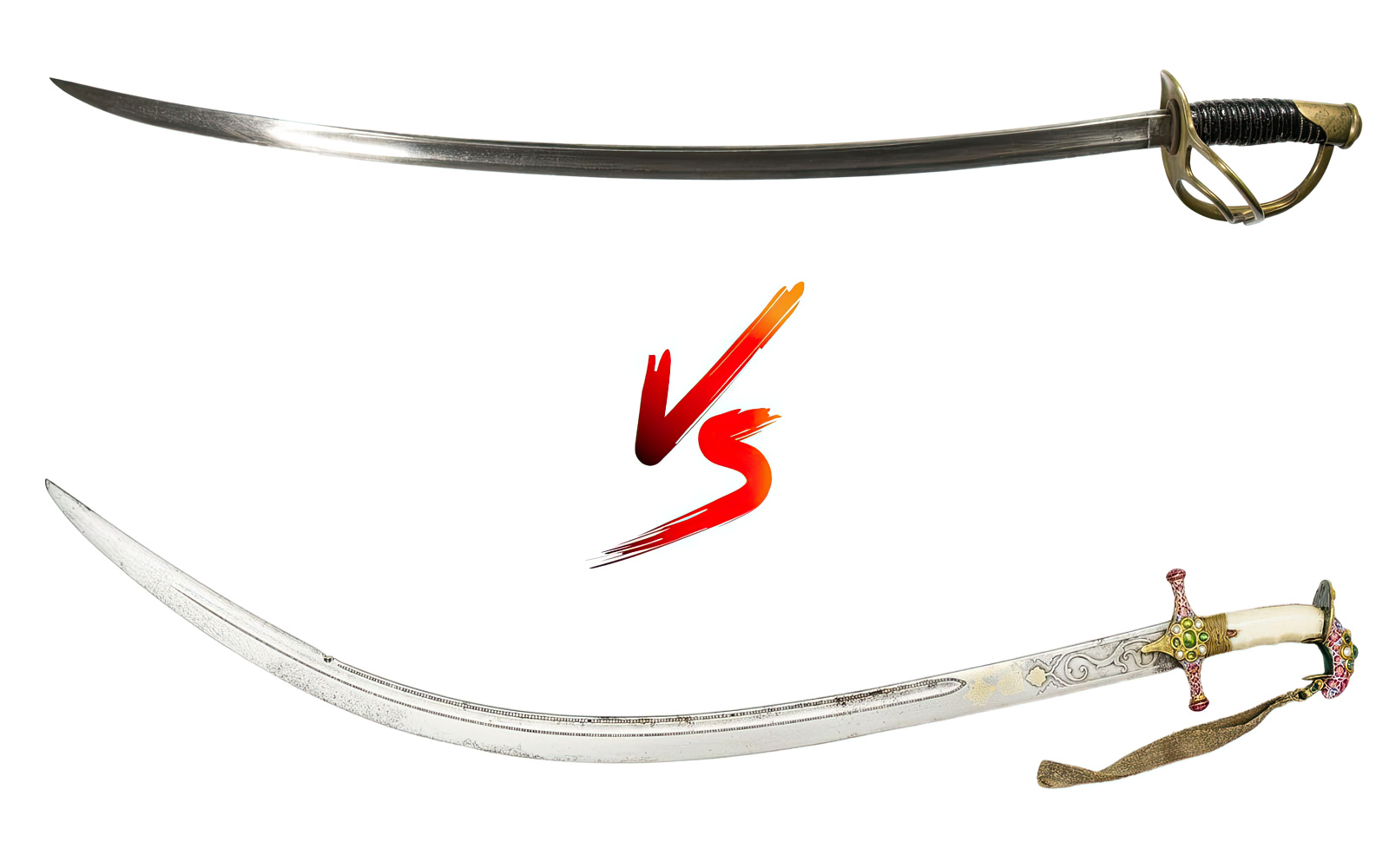
Scimitars and sabers are some of the most popular terms in the sword community and modern media, such as video games. They are types of blades with similar characteristics, yet they function differently. With different backgrounds and cultures, they have both remained dominant throughout the 20th century.
This article will explain their terms, simplifying them as much as possible. We will also examine their defining characteristics and historical impact and suggest a possible duel winner.
Terms, Characteristics, and Design Differences
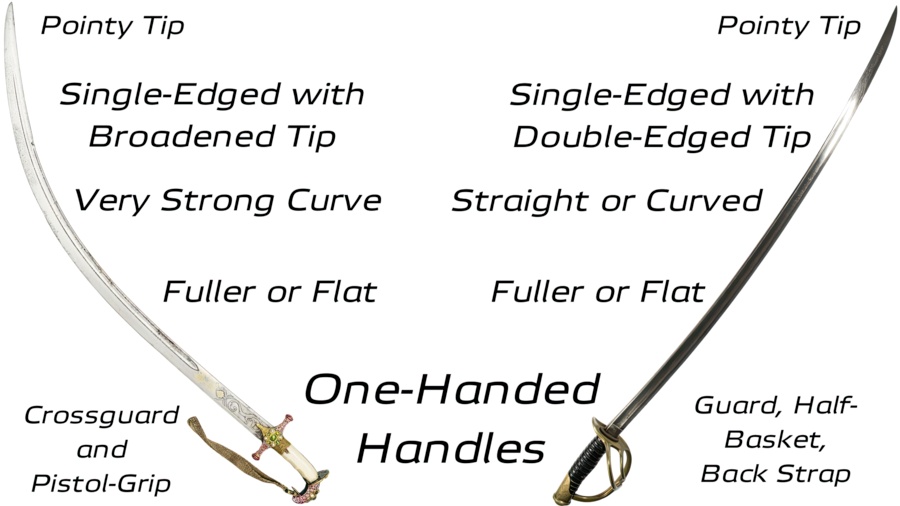
The term scimitar refers to an Eastern style of saber-like sword and may originate from the Italian word scimitarra, meaning a curved blade with a broadening tip. The term may also be derived from the Persian shamshir, meaning paw claw. Either way, the term scimitar translates to the sword in the native language.
The saber is a European blade with Turkish origins to the word selene. It also has Hungarian origins to the word szablya, and in Polish, it means szabla. The saber was first introduced to Eastern Europe, where it earned its name. The other term, saber, derives from the American standardization of spelling.
Blade
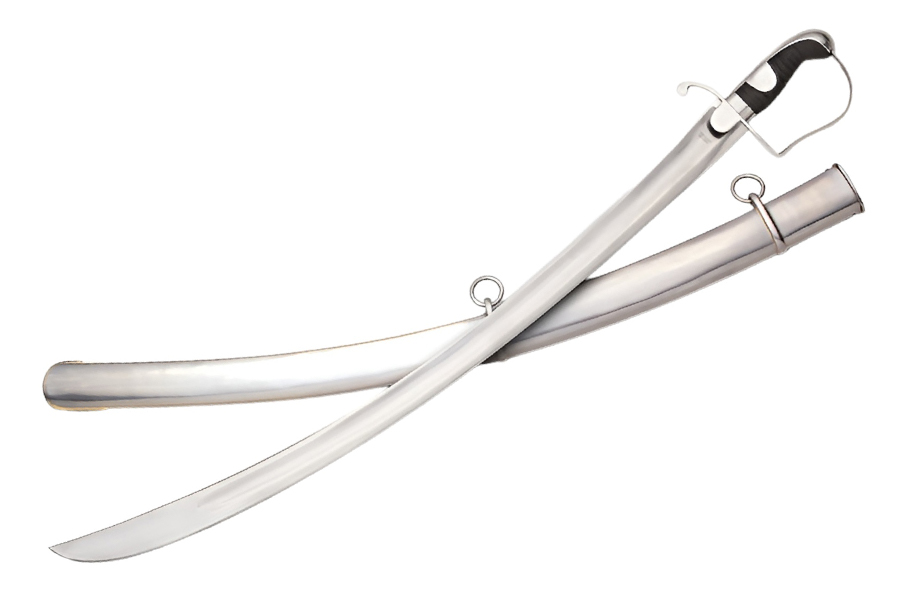
The scimitar and saber feature a single-edged blade sharpened on one side, some with a double-edged tip called a false-edge. The tip can be under, perpendicular, or on top of the user’s hand.
The Eastern scimitar has a more drastic pronounced curve, with the shamshir blade being one of the most curved swords in history. Some scimitars like the kilij have a yelman, a broadening tip, making it more impactful in slashing.
Both swords can feature a fuller running near its spine or closer to the center to balance the weight. Their blades vary in width, such as a broader 1796 light cavalry saber or a slim Cossack shashka.
The European saber can be straight or have a pronounced curvature near the tip. Some feature broadening tips like a Hungarian saber, but most possess the same thickness and taper.
Hilt
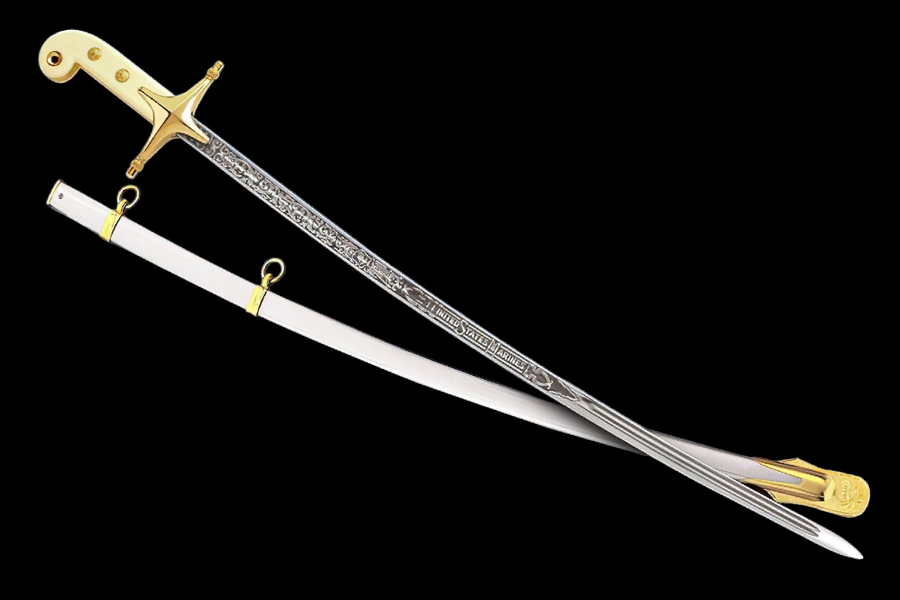
The scimitar and saber swords are one-handed weapons with firm handles sized to fit the human hand, usually between 2.4 to 4 inches (6 to 10 cm).
The scimitars comes in various styles, such as a pistol grip, sometimes known as a wolf handle, a curved pommel, or an Iranian straight with a broadened center held by a disc on the bottom.
Most scimitars feature a straight crossguard shaped like a diamond for protection and locking into the scabbard’s chape.
The European saber’s handle can be straight or curved, with a backstrap instead of a pommel. Most sabers feature the iconic D-style knuckle guard, while others have a semi-basket and a small quillon on the other side.
Scabbard
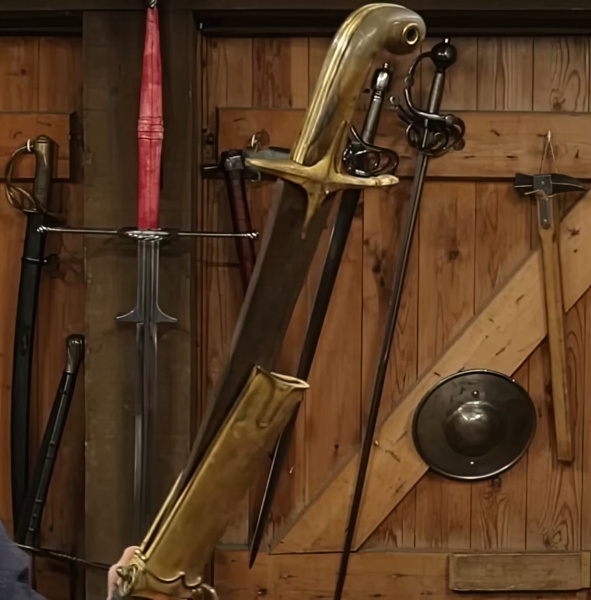
The scimitar and saber are carried inside scabbards made of wood or metal, protecting the blade from harm.
Both are carried on a belt or strap on the left side. The European saber is sheathed by sliding the blade inside the opening. Some scimitars have an interlocking system that slides the blade inside from the side.
Size and Weight
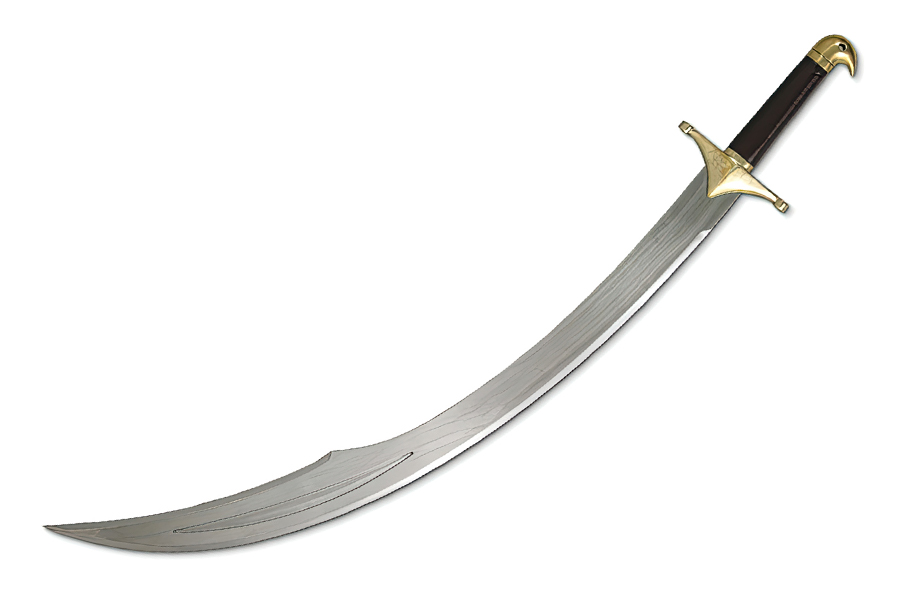
A common length can range from 27.6 to 43.3 inches (75 to 110 cm), with some sabers being long enough to be useful in close quarters and calvary.
Due to their light design, both offer quick strikes. The scimitar and saber weigh roughly 2 lbs (0.9 kg), depending on the type of hilt and the number of decorations.
Historical Significance
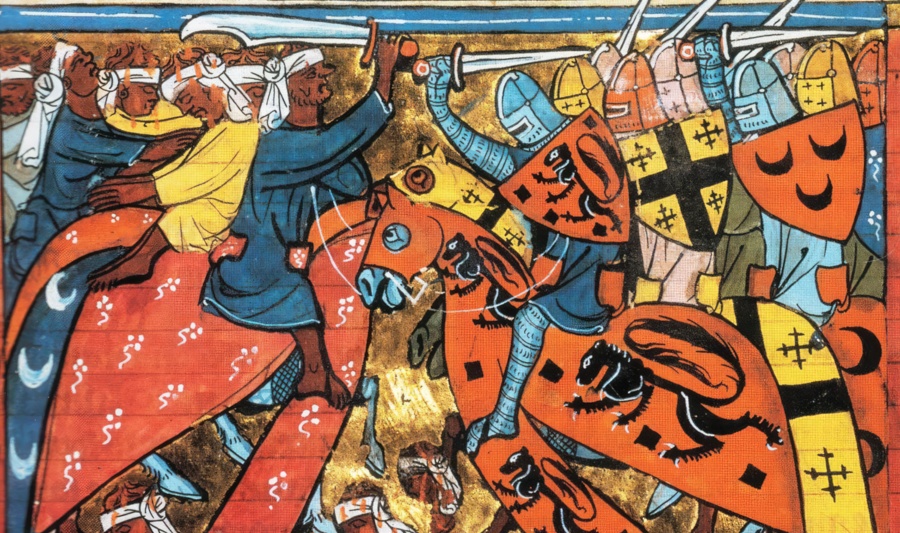
The scimitar and European saber trace their origins to the Turko-Mongol saber, which existed as early as the 7th century CE and was possibly influenced by the previous Chinese dao blades.
These early Turkish curved blades traveled great distances with the nomadic tribes, used by mercenaries or for conquest such as the Avars, Seljuk Turks, and especially the Mongolian conquests (7th-13th centuries).
The scimitar first appeared in Persia and India and gradually evolved to meet the needs of their lightly armored infantry and cavalry. Broad designs with curved blades were used during the Ottoman Empire from the 15th century onward.
The early European saber followed a design similar to the early Turkic blades. With time, they integrated with double-edged European swords and evolved while keeping their single-edged blades.
From Eastern Europe, sabers made their way to Western Europe and became dominant in the 17th century with the decrease of armor and increase of firearms and cavalry.
Today, they are still used in ceremonial contexts in contemporary armies and are one of the most popular HEMA (historical European martial arts) training tools.
Combat Preference
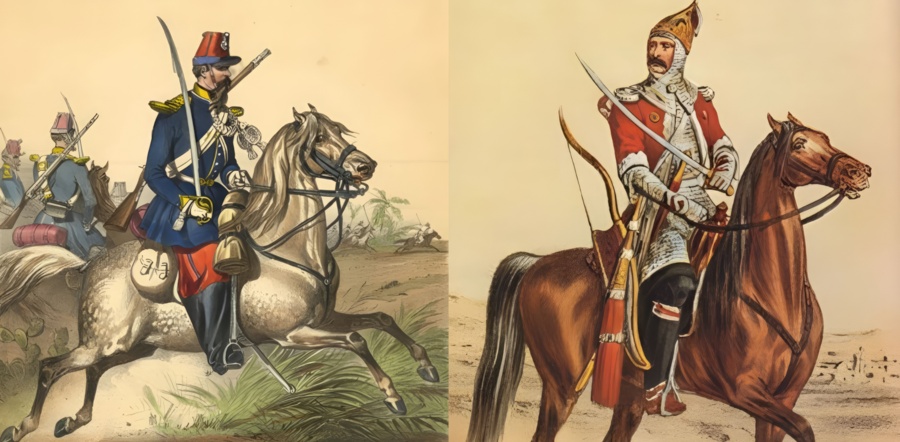
The scimitar consists of blades predominantly used for slashing and light thrusting. These one-handed swords offer speed and rely on the user’s skill more than their physical prowess.
When combined with a shield, scimitars were utilized for infantry, but their real effectiveness was on horseback where it could deliver a lethal blow through gaps in armor backed up by the horse’s momentum.
Most scimitars relied on slicing attacks, producing large gashes like the shamshir while others, like the kilij, focused on the impact using a broadened tip.
European sabers were cut-and-thrust weapons, either straight or featuring a softer curve. These one-handed nimble weapons combined with a pistol were used on horseback.
The saber and scimitar excelled against unarmored foes, making them ideal melee weapons. Carried effortlessly, they were versatile whether with a shield, on horseback, or in a duel.
